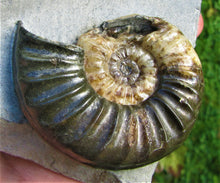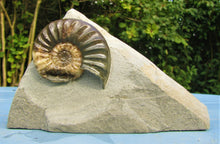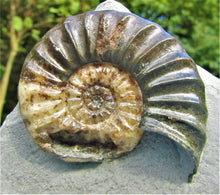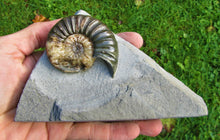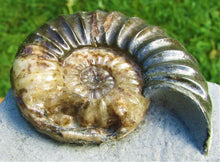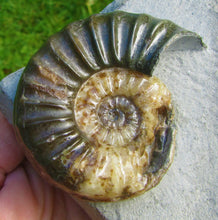
A stunning example of a calcite ammonite fossil of the species Asteroceras obtusum from the world-famous Jurassic Coast beach of Lyme Regis, Dorset UK.
The piece of limestone matrix measures 151 mm (5.93 inches) across and the fossil ammonite measures 61 mm (2.4 inches) across. The ammonite is well preserved and has been prepared out of the rock to reveal the whole shell including the aperture (shell opening). The ribs are very finely defined, and the colour is beautiful: a mix of yellows, browns and greys. It is an unusual example as part of the shell appears to have been crushed inwards before it was fossilised. A great example of the species and impressive in the flesh. The fossil weighs 615 grams and has a cut flat base to allow it to stand freely on its own for display. These are very sought after ammonites from this world-famous location.
Around 196 million years old (Sinemurian, Early Jurassic), this fossil would make a wonderful addition to any collection.







